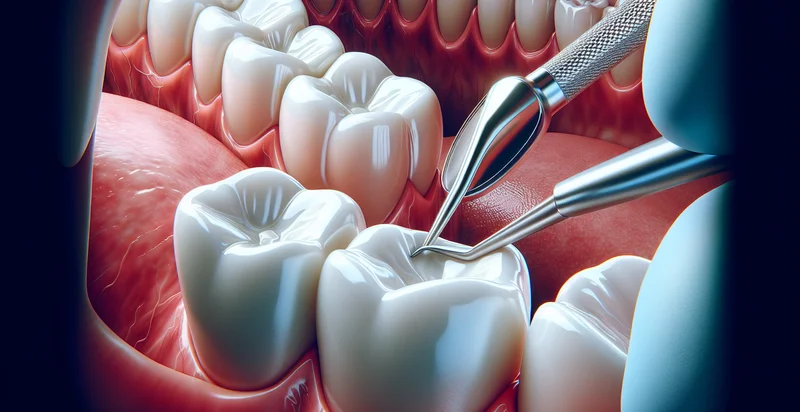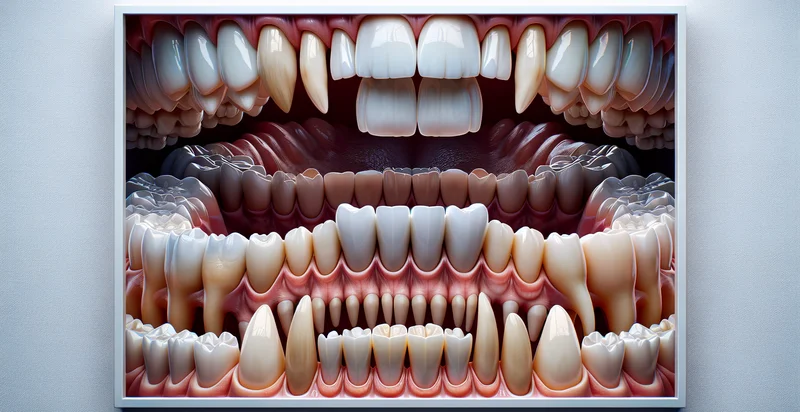Identify tooth development
using AI
Below is a free classifier to identify tooth development. Just upload your image, and our AI will predict the stage of tooth development for different age groups - in just seconds.

Contact us for API access
Or, use Nyckel to build highly-accurate custom classifiers in just minutes. No PhD required.
Get started
import nyckel
credentials = nyckel.Credentials("YOUR_CLIENT_ID", "YOUR_CLIENT_SECRET")
nyckel.invoke("tooth-development", "your_image_url", credentials)
fetch('https://www.nyckel.com/v1/functions/tooth-development/invoke', {
method: 'POST',
headers: {
'Authorization': 'Bearer ' + 'YOUR_BEARER_TOKEN',
'Content-Type': 'application/json',
},
body: JSON.stringify(
{"data": "your_image_url"}
)
})
.then(response => response.json())
.then(data => console.log(data));
curl -X POST \
-H "Content-Type: application/json" \
-H "Authorization: Bearer YOUR_BEARER_TOKEN" \
-d '{"data": "your_image_url"}' \
https://www.nyckel.com/v1/functions/tooth-development/invoke
How this classifier works
To start, upload your image. Our AI tool will then predict the stage of tooth development for different age groups.
This pretrained image model uses a Nyckel-created dataset and has 20 labels, including Adult, Child, Crowded, Decayed, Erupted, Functional, Healthy, Impacted, Infant and Misaligned.
We'll also show a confidence score (the higher the number, the more confident the AI model is around the stage of tooth development for different age groups).
Whether you're just curious or building tooth development detection into your application, we hope our classifier proves helpful.
Related Classifiers
Need to identify tooth development at scale?
Get API or Zapier access to this classifier for free. It's perfect for:
- Pediatric Dental Screening: Implement the tooth development identifier to assist pediatric dentists in screening for abnormalities in tooth development. By automating the classification of images related to children's dental health, practitioners can identify potential issues earlier, allowing for timely intervention.
- Orthodontic Treatment Planning: Use the identifier in orthodontic clinics to evaluate the development stages of teeth in patients. This can aid orthodontists in creating personalized treatment plans based on the current state of tooth development, optimizing both treatment timing and effectiveness.
- Dental Research Studies: Leverage the tooth development identifier in academic and clinical research studying tooth formation, growth rates, and associated anomalies. By analyzing large datasets efficiently, researchers can gain insights into dental health trends and improve understanding of developmental biology.
- Teledentistry Services: Integrate the image classification function into teledentistry platforms to remotely evaluate patients’ tooth development. This can enhance virtual consultations, providing dental professionals with reliable data to offer informed advice and treatment options without the need for physical visits.
- Dental Education and Training: Utilize the identifier in dental schools and training programs to facilitate learning about tooth development stages. It can serve as a valuable tool for students to practice classification skills, enhancing their diagnostic capabilities through interactive learning experiences.
- Insurance Claim Assessments: Employ the tooth development identifier to streamline assessments for dental insurance claims related to developmental anomalies. By providing objective classification results, insurance companies can improve the accuracy and speed of claim approvals and reduce fraudulent activities.
- Patient Progress Tracking: Incorporate the identifier into patient management systems to monitor the progression of tooth development over time. This functionality can help dentists keep detailed records of individual cases, making it easier to adapt treatment plans based on observed changes in dental health.


